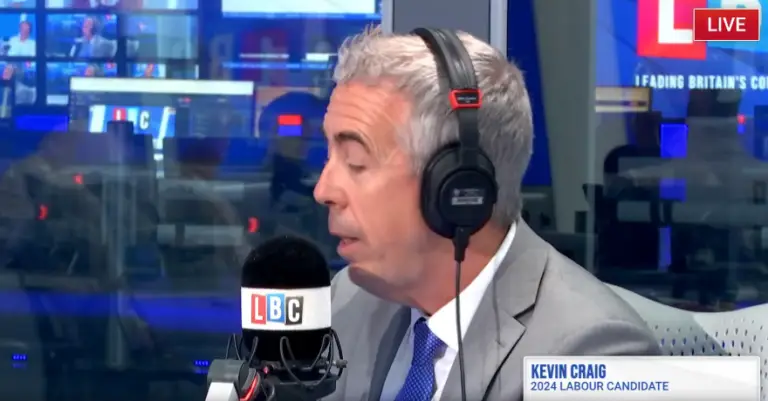As this academic year kicks off, we are on the cusp of a general election. We’re getting a sense of what directions party manifestos, and subsequent education policy, may take. But the impact of any eventual policies is still far down the tracks.
So what is the more immediate future looking like across the education sphere?
Early Years
We have seen significant investments in Early Years throughout the last year. As part of the Chancellor’s 2023 Spring Budget, the government announced the expansion of the existing 30-hour-offer to children from nine-months to two-years, and an uplift on funding to the existing early entitlement offers. This sets the scene for the year ahead, in which we will see providers having to contend with increased demand.
There are questions about how the workforce will manage to sustain this new offer, with a significant shortage of the Level 3 qualified practitioners required to keep settings open. Coupled with this, the GCSE maths requirement for those looking to undertake a Level 3 qualification means the pipeline of talent for this essential role isn’t there. We can expect calls for the Level 3 entry requirements to change, alongside calls for a different approach to how we manage the ongoing recruitment and retention crisis the sector is facing.
Funding challenges will continue to stay on the lips of many within the sector, but this goes beyond just the amount of per-child funding. How providers receive their funding will continue to be scrutinised, and local authorities will continue to feel pressure to reduce the percentage of “top slicing” which leaves parents and providers experiencing a shortfall in funding levels.
Early years and childcare will remain a key issue as we approach the general election. It is vital to recognise that early education is an issue that’s about both giving children a strong start and laying the foundation for a thriving, growing future workforce.
Schools
As Steve Rollett, deputy chief executive of the Confederation of School Trusts points out in his recent article for Tes, ‘as we navigate the lingering effects of the Covid-19 pandemic, it’s important to recognise that while exams and grading might have returned to something more “normal”, schooling itself is far from it.’
One of the biggest challenges facing schools is attendance, particularly with levels of persistent absence – when a student is absent for ten per cent or more of school. In 2022-23, 22.3 per cent of students were persistently absent compared to 10.9 per cent in the 2018-19 academic year (pre-pandemic). That’s more than a fifth of school children now persistently absent, a staggering number. There is a clear correlation between low attendance and lower exam outcomes. So where are the children and how do we get them back into school?
Attitudes to staying off school with low-level symptoms of illness have changed since the pandemic, as have attitudes to school more generally – including staying home on days when parents may be working from home instead of going into the office. The negative ramifications of the attendance crisis could reverberate for decades, making addressing this now an urgent priority for the country, not just the schools which are held to account for absence. As Children’s Commissioner Dame Rachel de Souza says in calling for joint working at a local level, schools can’t fix it on their own.
In another ‘students not in schools’ challenge, enrolment numbers at primary school level are falling, thanks to population changes plus unanticipated issues such as families leaving London schools in droves in favour of residing elsewhere in the era of remote working. The number of ‘bums on seats’ equates to the level of funding schools receive, leaving primary schools in the difficult position of having to fund good provision with less money, when school funding is already a challenge.
Getting students through the doors is only one step – you then of course have to teach them. But with record deficits for both the recruitment and retention of teachers, this issue must urgently be grappled with at a national level – reinvigorating the perception of teaching as a vital, expert and meaningful profession will be important, as will ensuring the ecosystem around the profession enables it to thrive.
Over the course of 2023, the impact of Ofsted on the schools sector drew extensive national attention. It was clear that whilst schools were not opposed to accountability and inspection, something was not working in the relationship between the inspectorate and school leaders and teachers. But the sector is about to reach a point of reset, as the current His Majesty’s Chief Inspector (HMCI) Amanda Spielman steps down at the end of 2023 and the newly appointed Sir Martyn Oliver comes into post in January 2024.
Against the backdrop of all of this, just days before back to school, a national scandal erupted with more than a hundred schools facing immediate full or partial closures due to reinforced autoclaved aerated concrete (RAAC). This came just days after other schools were closed with immediate effect due to unrelated structural integrity issues in fairly new buildings. Contingency planning for affected schools is still underway, as are ongoing surveys to determine the extent of the RAAC issue across the school estate. There is much discussion now over how we got to this point, to what degree the school estate has been underfunded and how much money it will take to fix it, with former Department for Education special advisor Sam Freedman saying the whole situation demonstrates the cost of austerity.
Sir Kevan Collins, the government’s former schools recovery tsar, recently blamed this year’s stark North-South divide in GCSE results on the government only funding ten per cent (£1.4bn) of Collins’ proposed £15bn recovery budget. If underfunding school capital budgets has led to the school estate crumbling into a heap, there may be an important lesson for the current, and any future government, to consider: will the equivalent happen down the line for student outcomes and life chances if there is insufficient funding to empower schools to meet the post-pandemic challenges on the ground?
Further Education (FE)
The government is aiming to pass its Lifelong Learning (Higher Education Fee Limits) Bill before the end of the parliamentary session in November 2023. If the bill is passed successfully, then there is an ambition for the Lifelong Loan Entitlement to be introduced in 2025. As a result, there is a sense of optimism around the potential for upskilling and improving opportunities. The scheme’s success will depend heavily on the flexibility granted to recipients and the continued support of future governments.
Meanwhile, with T Levels qualifications now in place, more than 100 other qualifications, including many BTECs, are set to have funding withdrawn by next year. There is still much to be worked out in terms of what impact this will have on students, particularly those from disadvantaged backgrounds.
The next general election is less than 18 months away and as a result every party is looking to finalise their skills offer. With FE funding levels still below 2010 levels, several groups have argued that the sector would benefit from greater backing from government in order to ensure students have access to quality routes through post-16 education. Recently appointed Minister for Skills, Apprenticeships and Higher Education Robert Halfon MP highlighted his ambitions for improved skills and the link to wider economic growth for businesses. From the Conservative backbenches, there are calls to go further. For example, the New Conservatives group’s Plan to upskill Britain includes several recommendations for more further education to be delivered directly by businesses and to target funding on where national skills shortages are most acutely felt.
Meanwhile Labour outlined several reforms to FE which sit at the centre of their wider education-themed opportunity mission which they titled Breaking down the barriers to opportunity at every stage. A key proposal includes reforming the Apprenticeships Levy into a ‘Growth and Skills Levy’ to allow firms to spend up to fifty per cent of their levy contributions, including current underspend, on non-apprenticeship training. Labour also has ambitions to devolve more adult skills funding streams to combined authorities and establish a new body, Skills England, to ensure skills training meets current and future demand.
Higher Education (HE)
The year ahead presents several challenges for the Higher Education sector. Plans for further industrial action by university staff, along with the rising cost of living (especially for accommodation), means students will, more than ever, be focused on value for money from their university experience.
On legislation, now the Higher Education (Freedom of Speech) Act has been passed, expect a growing focus by both government and the Office for Students on the issue, with the regulator likely to look for a university or student union to use as an example test case.
As noted above, the Lifelong Learning Bill will continue its passage through the House of Lords and is expected to be passed before the end of the parliamentary session in November 2023. It will then be down to providers and government to develop the frameworks and programmes to make lifelong learning entitlements a reality.
Expect to hear more about specific groups of students as voices from across the sector continue to remind people that there is not just one archetypal student. A rise in commuter or part-time students reveals a desire for students to fit university around work or caring responsibilities during the ongoing cost-of-living crisis.
Meanwhile, international students face uncertainty as parts of the Conservative Party continue to argue that student visas (and crucially visas for dependents and partners) should be more tightly controlled.
EdTech
To stay ahead of the curve this year, EdTech organisations must analyse and mitigate current gaps in learning. Examples might be utilising built-in accessibility frameworks to provide students with disabilities an equal learning experience (such as the use of closed captioning or virtual sign language) or the incorporation of wider digital literacy lessons across the curriculum to equip students with comprehensive, adaptable skillsets suited to the digital workforce.
With a continued ability and willingness for schools to use remote learning as a contingency measure during an emergency (as seen in the RAAC crisis), hybrid learning structures are sure to stick around. Plus, the wider fallout from the pandemic means schools are wanting to take every possible measure to support students and that includes leveraging tech to maximum effect. Combined, these factors mean we are likely to see schools take a more strategic approach to determining what tools to use, enabling increased accessibility and efficiency for teaching and learning.
The use of exciting new technologies such as Artificial Intelligence and Virtual Reality are also set to increasingly feature in providing a more immersive and engaging learning experience for students. These tools will also play an important role in improving the resources students have at their fingertips to use for research, analysis and composition, accelerating their pace of learning to achieve more, faster.





